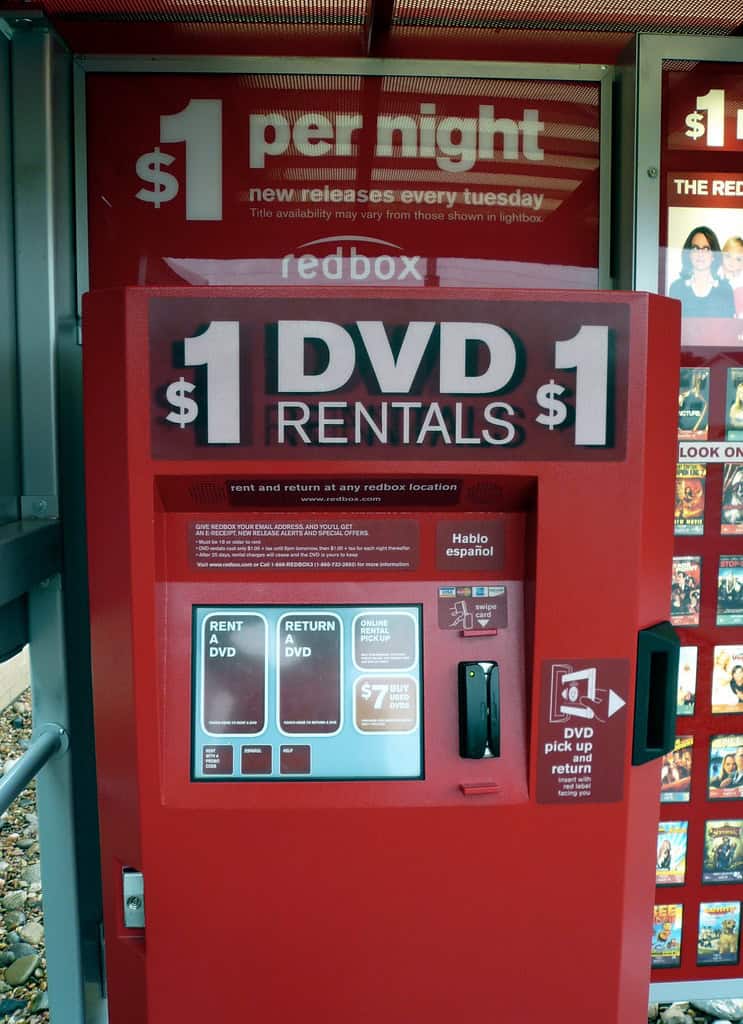
Roald Dahl’s most delightfully grotesque villains are finally heading to the screen in The Twits, an upcoming animated feature from Netflix. Known for their foul habits and prank-filled marriage, Mr. and Mrs. Twit have long been two of Dahl’s most wickedly funny creations—and now, for the first time, they’ll get the full cinematic treatment in a bold new animated format.
Netflix is adapting The Twits as part of its larger creative partnership with the Roald Dahl Story Company, and it’s shaping up to be one of the most anticipated animated releases of 2025.

Project Overview
The Twits is being brought to life by Netflix Animation in collaboration with Jellyfish Pictures, known for their high-quality visual effects work. The film is directed and co-written by Phil Johnston, whose previous work includes Ralph Breaks the Internet and Zootopia, two critically acclaimed family comedies. Johnston brings with him a sharp comedic sensibility and a proven track record of balancing heartfelt storytelling with irreverent humor—making him a perfect fit for the twisted world of the Twits.
Producers on the project include Meg Favreau, Maggie Malone, and Daisy May West, all of whom are veterans in animation and comedy development.
Interestingly, the adaptation reimagines elements of Dahl’s original story. While the core of the book—a bitter, prank-filled marriage between two hideous people—remains intact, the movie adds a new setting: Twitlandia, a theme park run by the Twits as a front for their mischief. This world-building expands the original material into a more visual, high-energy adventure suited to a modern audience.

🎙 Voice Cast
Netflix has recruited a stellar voice cast for The Twits, blending Hollywood A-listers with beloved character actors:
- Natalie Portman
- Emilia Clarke
- Margo Martindale
- Johnny Vegas
While the exact character roles haven’t been officially revealed, many fans speculate that Portman and Clarke will play the clever orphans who ultimately challenge the Twits’ rule over Twitlandia. Martindale and Vegas seem almost custom-fit to bring Mr. and Mrs. Twit’s exaggerated grotesqueness to life.
📅 Release Timeline
Netflix has confirmed that The Twits will premiere globally in Fall 2025, likely positioned for a family-friendly holiday release window. Given Netflix’s past strategy with animated features—often launching in November or early December—many are expecting it to be part of the streamer’s big fourth-quarter content push.

📸 Recent Updates & First Look
In June 2025, Netflix released the first official stills from the film, offering fans a glimpse at the exaggerated, rubbery 3D animation style and the hilariously nasty designs of Mr. and Mrs. Twit. The visuals emphasize slapstick and exaggerated features, leaning into the original book’s caricature-style artwork by Quentin Blake while updating the look for a new generation.
The stills also showcase some of the film’s best-known gags from the book, including:
- Mr. Twit’s infamous “wormy spaghetti” prank
- Mrs. Twit’s revenge via shrinking cane trick
- And even early glimpses of the Muggle-Wumps, the mistreated monkeys looking to escape
These hints suggest the movie will retain much of the book’s mean-spirited humor while wrapping it in a vibrant, comedic package.
🎬 What to Expect
Roald Dahl’s books are no strangers to adaptation, but The Twits marks the first time this particular title has been brought to the screen. Known for its gross-out humor and absurdity, the story is well suited to the kind of animated chaos Netflix has embraced in recent years.
Unlike previous Dahl adaptations which leaned more whimsical or dramatic (The BFG, Matilda, Charlie and the Chocolate Factory), The Twits looks to be a full-blown comedic romp, complete with anarchic set pieces and fast-paced jokes aimed at both kids and adults.
Given Phil Johnston’s background, expect witty writing, visual gags galore, and a satirical bite that doesn’t shy away from the book’s darker themes about cruelty, stupidity, and comeuppance.
Final Thoughts
The Twits is shaping up to be a breakout hit for Netflix’s growing animation library. With a beloved source material, a strong voice cast, and an experienced director at the helm, it could very well be one of the streaming giant’s biggest family releases of the year.
Stay tuned for trailers, more casting reveals, and deeper dives into Twitlandia as the fall release date approaches. If you love your family movies with a side of disgusting humor and social satire, The Twits might be the messiest masterpiece of the year.
Let me know if you want me to build out a comparison section with other Netflix Dahl films like Matilda the Musical or Willy Wonka adaptations!
A Look Back At Region Locked Blu-rays
Region-locked Blu-rays can pose challenges for movie enthusiasts. These discs contain digital restrictions that limit playback to specific geographic areas. Blu-ray discs use three region codes: A, B, and C, which correspond to different parts of the world. This system aims to control distribution and release dates across global markets.
Blu-ray players also come with region settings. A player from one region may not play discs from another. This can frustrate travelers or collectors who acquire discs from different countries. Some Blu-ray releases are region-free, allowing playback on any device regardless of location.
Understanding region locks helps consumers make informed choices. It affects purchasing decisions for both discs and players. While region locks can limit options, solutions exist for those seeking a broader selection of titles.
Key Takeaways
- Blu-ray discs use three region codes to restrict playback to specific areas
- Region-locked players may not play discs from other regions
- Some Blu-ray releases are region-free, offering unrestricted playback on any device
Understanding Region Codes and Region Locks
Region codes and locks limit Blu-ray disc playback to specific geographical areas. This system impacts consumers’ ability to watch content from different parts of the world.
The Basis of Region Coding
Region coding divides the world into three main areas for Blu-ray discs:
- Region A: North America, South America, East Asia
- Region B: Europe, Africa, Middle East, Australia, New Zealand
- Region C: Russia, China, India, other parts of Asia
Movie studios use these codes to control release dates and pricing across markets. Blu-ray players are programmed to only play discs from their designated region.
Some discs are region-free, allowing playback on any player worldwide. These are marked as Region 0 or ABC.
How Region Locks Affect Consumers
Region locks can frustrate consumers who want to watch content from other parts of the world. Travelers may find their discs won’t play on devices abroad.
Importing movies becomes challenging. Fans might have to wait longer for local releases or miss out on special editions from other regions.
Some workarounds exist:
- Multi-region Blu-ray players
- Changing player region settings (limited attempts)
- Region-free discs
These options have drawbacks like higher costs or potential warranty issues. Region locks ultimately limit consumer choice and flexibility in the global market for movies and TV shows.
Region-Specific Blu-Ray Players and Discs
Blu-ray players and discs are designed with region codes to control distribution and playback across different geographical areas. These codes affect compatibility between devices and media from various parts of the world.
Compatibility Across Regions
Blu-ray discs and players are divided into three main regions: A, B, and C. Region A covers North America, South America, and East Asia. Region B includes Europe, Africa, and Australia. Region C encompasses Central and South Asia, Eastern Europe, and China.
Players are typically locked to a specific region. A Region A player will only play Region A discs. Some manufacturers produce region-free players that can play discs from any region. These offer more flexibility for international travelers or film enthusiasts.
Region codes are usually printed on disc cases and the discs themselves. For Blu-rays, they appear as letters inside a globe icon. DVD region codes use numbers instead.
Region Coding in Home Entertainment Systems
Region coding extends beyond standalone Blu-ray players. Gaming consoles like PlayStation also have region restrictions for Blu-ray playback. Smart TVs with built-in Blu-ray players follow similar region-locking principles.
Software Blu-ray players for Windows PCs often allow users to change regions a limited number of times. This feature provides some flexibility but prevents unlimited region switching.
Multi-region players are available but may cost more than standard players. They offer the advantage of playing discs from any region without modification.
Region-locking can be frustrating for consumers but serves to protect content distribution rights. It allows movie studios to control release dates and pricing in different markets.
Navigating Region-Free Playback and Solutions
Region-free Blu-ray players offer flexibility for movie enthusiasts. These devices bypass regional restrictions, allowing playback of discs from any part of the world.
Benefits of Region-Free Blu-Ray Players
Region-free Blu-ray players unlock a world of content. Users can enjoy movies from different countries without restrictions. This expands film libraries and cultural experiences.
These players eliminate the need for multiple devices. One unit can play discs from all regions. This saves space and money.
Region-free players also future-proof collections. As region coding evolves, these devices remain compatible. They support various formats, including 4K Ultra HD Blu-ray.
Some region-free players offer enhanced audio quality. They may include advanced sound processing features. This improves the overall viewing experience.
Upgrading to Multi-Region Capability
Upgrading existing Blu-ray players is possible. Some models allow firmware updates for region-free playback. Users can check manufacturer websites for official updates.
Third-party firmware exists for some players. These modifications can remove region locks. However, they may void warranties or violate terms of service.
Professional services can modify Blu-ray players. Technicians can alter hardware to bypass AACS region checks. This option works for players without software upgrade paths.
New region-free players are widely available. They come pre-configured for multi-region playback. These devices often support the latest Ultra HD Blu-ray standards.
The Role of Digital and Alternate Formats
Digital formats and streaming services have changed how people consume media. These changes impact the relevance of region-locked Blu-rays and other physical disc formats.
Digital Streaming versus Physical Media
Streaming platforms offer instant access to a vast library of content. Users can watch movies and TV shows on various devices without worrying about region codes. This convenience has led many to abandon physical media.
Streaming services often rotate their content. Popular titles may disappear without warning. Physical discs provide a permanent copy that viewers can watch anytime.
Video quality varies on streaming platforms. Bandwidth limitations can result in compressed video and audio. Blu-rays offer consistent high-quality playback with uncompressed audio.
Digital rights management (DRM) controls access to streamed content. Users may lose access if they cancel subscriptions or travel abroad. Blu-rays can be played anywhere with a compatible device.
Comparing Disc Formats: Blu-Ray, DVD, CD
Blu-ray discs offer superior video and audio quality compared to DVDs and CDs. They can store up to 50GB of data, allowing for 4K resolution and lossless audio.
DVDs remain popular due to their wide compatibility. Many households still own DVD players. The format’s lower resolution is less noticeable on smaller screens.
CDs focus solely on audio. They provide high-quality sound for music enthusiasts. Some collectors prefer owning physical albums over digital downloads.
Ultra HD Blu-rays support 4K resolution and HDR. These discs offer the highest quality home video experience. They require specialized players and 4K TVs to utilize their full potential.
Region coding affects Blu-rays and DVDs differently. Blu-rays use three main regions (A, B, C), while DVDs have six. This simplification makes Blu-rays slightly more flexible for international viewers.
Frequently Asked Questions
Blu-ray region codes impact disc playability and consumer options. Understanding these codes helps buyers make informed decisions and navigate potential compatibility issues.
What is the significance of Blu-ray region codes?
Blu-ray region codes control where discs can be played. They limit playback to specific geographic areas. This system helps movie studios manage release dates and pricing across different markets.
Region codes also protect copyright and prevent piracy. They ensure movies are only watched in authorized regions.
How can consumers identify if a Blu-ray disc is region free?
Region-free Blu-rays have “ABC” or “ALL” printed on the case. This indicates they work in all regions. Some discs list compatible regions on the packaging or disc label.
Online retailers often specify region information in product descriptions. Checking these details before purchase helps avoid compatibility issues.
What methods are used to unlock the region code on Blu-ray players?
Some Blu-ray players can be unlocked using remote control codes. These codes vary by manufacturer and model. Users enter specific button combinations to access hidden menus.
Third-party firmware modifications can remove region restrictions. This method requires technical knowledge and may void warranties.
Are there Blu-ray players available that support all regions?
Yes, region-free Blu-ray players exist. These devices play discs from any region. They are often sold by specialty retailers or modified versions of standard players.
Multi-region players offer flexibility for international movie collections. They eliminate the need for separate players for different regions.
Can 4K Blu-ray players bypass region codes for standard Blu-ray discs?
4K Blu-ray players typically follow region coding for standard Blu-ray discs. They do not automatically bypass these restrictions. 4K UHD discs are usually region-free, but the players still enforce region locks on regular Blu-rays.
Some 4K players can be modified to play all regions. This process is similar to unlocking standard Blu-ray players.
What are the considerations when purchasing Blu-rays for a region different from the player’s?
Buyers should check their player’s region before purchasing foreign Blu-rays. Incompatible discs won’t play without modifications.
Language options and subtitle availability vary by region. Consumers should verify these features meet their needs.
Import fees and shipping costs can increase prices for foreign Blu-rays. Buyers should factor these expenses into their purchasing decisions.






